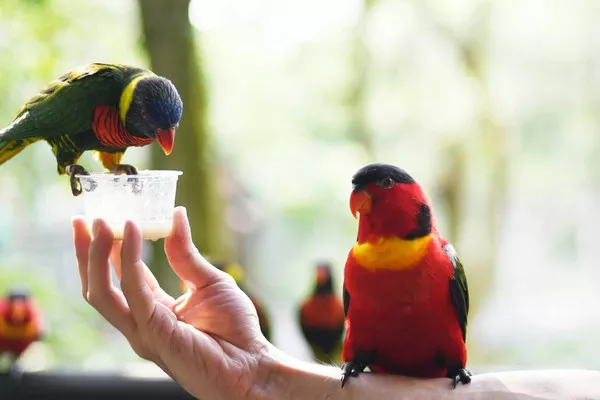Snakes are fascinating creatures that play an important role in ecosystems around the world. However, many people fear these reptiles due to their reputation for aggression and venomous bites. While most snakes are not naturally aggressive, there are certain times of the year when they are more likely to display defensive behaviors. Understanding when and why snakes become more aggressive can help people avoid unnecessary encounters and appreciate these animals from a safe distance.
Understanding Snake Behavior
To understand when snakes are most aggressive, it’s essential to first recognize that most snake aggression is actually defensive behavior. Snakes generally prefer to avoid conflict and only become aggressive when they feel threatened. They are not naturally aggressive predators but will defend themselves if they believe their safety is at risk.
Several factors influence snake behavior, including temperature, breeding cycles, and availability of food. By understanding these factors, it’s easier to predict when snakes might be more prone to aggressive displays.
Seasonal Influence on Snake Aggression
The time of year has a significant impact on snake behavior. In most regions, snake activity is closely tied to the seasons, which influence their metabolism, reproductive cycles, and food availability.
Spring: Mating Season and Increased Activity
Spring is one of the most active times for snakes, especially in temperate climates. As temperatures rise, snakes emerge from hibernation (a state known as brumation in reptiles) and begin searching for food and mates. This increase in activity can make snakes more visible to humans.
During the mating season, male snakes may become more aggressive as they compete for females. This is especially true for species like rattlesnakes and cottonmouths, where males engage in combat with one another to establish dominance. While these fights are typically between males, snakes may also display more defensive behaviors if approached by humans during this time.
Female snakes preparing to lay eggs or give birth may also become more defensive to protect their young. Some species, such as the copperhead, are known to guard their nesting sites, making them more prone to defensive strikes if disturbed.
Summer: Peak Activity and Defensive Behavior
Summer is often the peak season for snake activity. Warmer temperatures increase their metabolism, making them more active in search of food. Snakes are often found sunning themselves to regulate their body temperature, which can bring them into closer contact with humans.
During the summer months, snakes are more likely to defend themselves aggressively if they feel cornered or threatened. This is particularly true for venomous species such as rattlesnakes, cottonmouths, and copperheads. The combination of increased activity and higher temperatures can heighten the chances of human-snake encounters.
Additionally, summer is when many juvenile snakes are born. Young snakes may be more unpredictable and quicker to bite if they feel threatened. Though their venom is just as potent as that of adult snakes, they are often less experienced in delivering measured bites, which can make them seem more aggressive.
Fall: Preparing for Brumation
As temperatures begin to cool in the fall, snakes become more focused on feeding to build up fat reserves for the coming winter. This period of increased feeding activity can make them more visible and potentially more defensive if disturbed.
Male snakes may still seek out mates during early fall, particularly in warmer climates where the breeding season extends later into the year. However, by late fall, most snakes become less active as they prepare for brumation.
During this time, snakes may seek out warm, sheltered areas such as woodpiles, garages, or basements. Encounters with humans can occur more frequently as snakes search for suitable winter dens, and they may become defensive if disturbed.
Winter: Dormant Period
Winter is the least likely time to encounter an aggressive snake, as most snakes enter a state of brumation. During this period, snakes are largely inactive, hiding in burrows, rock crevices, or other sheltered locations. However, in warmer climates, some snakes may remain active year-round, particularly if food is available.
Even during brumation, snakes can become defensive if disturbed. People cleaning out sheds, barns, or woodpiles during the winter months should be cautious, as a snake might be hiding and could strike if startled.
Factors That Influence Aggression
While the time of year plays a crucial role in snake aggression, several other factors can influence a snake’s likelihood to display defensive behavior:
Species: Some snake species are more prone to defensive behavior than others. Venomous snakes like rattlesnakes, cottonmouths, and copperheads are more likely to stand their ground, while non-venomous species like garter snakes or rat snakes are more likely to flee.
Temperature: Snakes are ectothermic, meaning their body temperature depends on their environment. Warmer temperatures make snakes more active and potentially more defensive.
Human Interaction: Frequent human disturbances can make snakes more defensive. Repeated encounters may cause a snake to become more likely to strike as a means of self-defense.
Health and Injury: An injured or sick snake is more likely to display defensive behavior as it feels more vulnerable.
How to Avoid Snake Encounters
Understanding when snakes are most aggressive can help people avoid unnecessary encounters. Here are some tips to minimize the risk of encountering an aggressive snake:
Be Vigilant in High-Risk Areas: Snakes are often found in tall grass, woodpiles, rocky outcrops, and near water sources. Be cautious in these areas, especially during the spring and summer months.
Wear Protective Clothing: When hiking or working in snake-prone areas, wear boots, long pants, and gloves to protect against bites.
Give Snakes Space: If you encounter a snake, maintain a safe distance. Most snakes will retreat if given the opportunity.
Seal Entry Points: Prevent snakes from entering homes by sealing cracks and holes around foundations, doors, and windows.
Educate Yourself: Learn to identify local snake species and understand which ones are venomous.
Conclusion
Snakes are often misunderstood creatures that play a vital role in maintaining healthy ecosystems. While they are not naturally aggressive, there are certain times of the year when they are more prone to defensive behavior. Spring and summer are the most active and potentially aggressive seasons due to mating, feeding, and increased human encounters. By understanding snake behavior and taking proper precautions, people can coexist with these remarkable reptiles safely and respectfully.
Respecting snakes and their habitats not only helps prevent unwanted encounters but also supports biodiversity and the health of natural ecosystems. With knowledge and caution, humans and snakes can peacefully share the environment.
Related Topics:
























